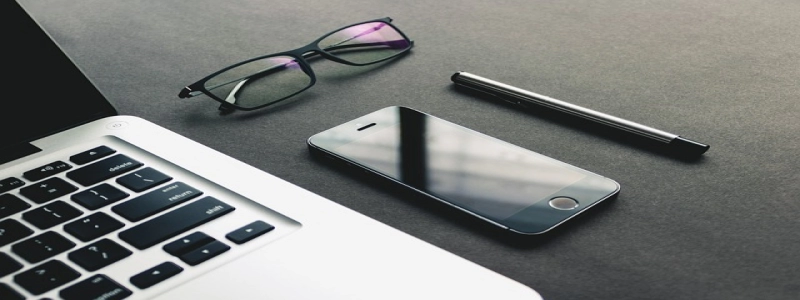USB-A to Ethernet: Enhancing Connectivity for Your Devices
Introduction
I. What is USB-A to Ethernet?
A. Definition and Purpose
B. How It Works
Benefits of USB-A to Ethernet
II. Improved Internet Connection
A. Faster and More Stable Connection
B. Reduced Latency and Ping
III. Flexibility and Compatibility
A. Connecting Multiple Devices
B. Compatible with Various Operating Systems
How to Use USB-A to Ethernet
IV. Required Hardware and Software
A. USB-A to Ethernet Adapter
B. Ethernet Cable
C. Device with USB-A Port
D. Operating System Compatibility
V. Step-by-Step Guide
A. Connect the Ethernet Cable to the Adapter
B. Plug the USB-A End into the Device
C. Install Required Drivers (if necessary)
D. Configure Network Settings (if required)
Conclusion
USB-A to Ethernet: Enhancing Connectivity for Your Devices
Introduction
With the advancement of technology and the increasing dependence on the internet, having a reliable and fast internet connection has become essential. USB-A to Ethernet is a solution that allows users to connect their devices to the internet via an Ethernet cable, providing a more stable and efficient connection. In this article, we will explore the benefits of using USB-A to Ethernet and provide a step-by-step guide on how to use it.
I. What is USB-A to Ethernet?
A. Definition and Purpose
USB-A to Ethernet refers to an adapter that enables devices with a USB-A port, such as laptops, desktop computers, and game consoles, to connect to the internet using an Ethernet cable. It allows these devices to access the internet through a wired connection, providing a more reliable and secure connection than Wi-Fi.
B. How It Works
USB-A to Ethernet adapters convert the USB-A port into an Ethernet port, allowing the device to connect to a wired network. By using an Ethernet cable, users can achieve a faster and more stable internet connection, especially in areas with weak Wi-Fi signals.
II. Improved Internet Connection
A. Faster and More Stable Connection
One of the main advantages of using USB-A to Ethernet is the improved internet connection it offers. Unlike wireless connections, Ethernet cables provide a direct and dedicated link to the internet, resulting in faster download and upload speeds. This is particularly beneficial for activities that require high bandwidth, such as online gaming, streaming, and video conferencing.
B. Reduced Latency and Ping
USB-A to Ethernet also helps reduce latency and ping, which are crucial for online gaming and real-time applications. The direct connection offered by Ethernet cables minimizes delays and data loss, resulting in a smoother and more responsive online experience.
III. Flexibility and Compatibility
A. Connecting Multiple Devices
USB-A to Ethernet adapters allow users to connect multiple devices to the internet simultaneously. With the help of a switch or router, users can create a local area network (LAN) and connect multiple devices, such as computers, gaming consoles, and media servers, using a single Ethernet connection.
B. Compatible with Various Operating Systems
USB-A to Ethernet adapters are compatible with various operating systems, including Windows, macOS, Linux, and Chrome OS. This ensures compatibility across different devices, making it a versatile solution for enhancing connectivity.
IV. How to Use USB-A to Ethernet
A. Required Hardware and Software
To use USB-A to Ethernet, you will need the following:
1. USB-A to Ethernet Adapter: Purchase a USB-A to Ethernet adapter from a reputable manufacturer.
2. Ethernet Cable: Ensure you have a compatible Ethernet cable of sufficient length.
3. Device with USB-A Port: This can be a laptop, desktop computer, game console, or any other device with a USB-A port.
4. Operating System Compatibility: Make sure your device’s operating system is compatible with the USB-A to Ethernet adapter.
V. Step-by-Step Guide
To use USB-A to Ethernet, follow these steps:
A. Connect the Ethernet Cable to the Adapter: Plug one end of the Ethernet cable into the Ethernet port of the adapter.
B. Plug the USB-A End into the Device: Insert the USB-A end of the adapter into the USB-A port of your device.
C. Install Required Drivers (if necessary): Some adapters may require you to install specific drivers, which can usually be found on the manufacturer’s website. Follow the instructions provided to install the drivers correctly.
D. Configure Network Settings (if required): In most cases, your device will automatically detect and configure the network settings for the Ethernet connection. However, if you need to manually configure the settings, refer to your device’s documentation or network administrator.
Conclusion
USB-A to Ethernet adapters provide a simple yet effective solution for enhancing connectivity and improving internet access. With the ability to provide faster and more stable connections, compatibility with various devices and operating systems, and the flexibility to connect multiple devices simultaneously, USB-A to Ethernet has become a valuable tool for individuals and organizations seeking an efficient and reliable internet connection.







